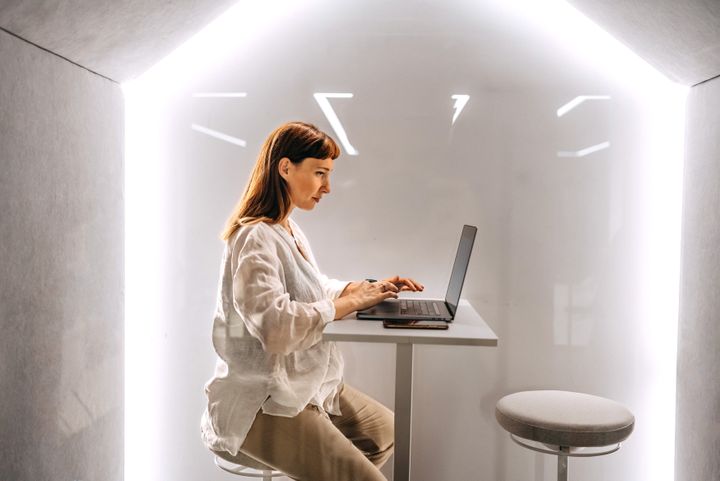
If you’ve ever been on a work video call (and after COVID, it’s safe to say lots of us have), then you’ll probably know the particular stressors the medium can bring.
There’s the person who’s accidentally muted themselves. There are the patchy internet connections. There’s the awkward, crossed-mic silences when the person leading the call asks a group questions (martyrs, IMO).
And now, a paper published in Imaging Neuroscience has found that video calling people affects more than just social cues; it suggests that the contact method can have a pretty noticeable effect on how our brains process the interaction.
“Separable Processes for Live ‘In-Person’ and Live ‘Zoom-like” Faces’,” a study led by Yale professor Joy Hirsch, found that “the social systems of the human brain are more active during real live in-person encounters than on Zoom.“
People who we see on video calls “do not have the same ‘privileged access’ to social neural circuitry in the brain that is typical of the real thing,” Hirsch said.
How do we know?
The researchers used brain imaging tools to look at the neural activity of pairs speaking via video call and those speaking in person.
The scientists observed high levels of neural activity during face-to-face interactions, along with long gaze times, increased pupil diameters, and what appeared to be enhanced face-processing abilities.
Those who were looking at an image on a screen had a “suppressed” social response compared to those who were talking face-to-face, the paper revealed.
“Overall, the dynamic and natural social interactions that occur spontaneously during in-person interactions appear to be less apparent or absent during Zoom encounters,” said Professor Hirsch. “This is a really robust effect.”
The Yale study highlighted the unique impact face-to-face interactions can have on our brains.
“Online representations of, faces, at least with current technology, do not have the same ‘privileged access’ to social neural circuitry in the brain that is typical of the real thing,” said Professor Hirsch.
So, if you’ve ever felt like a video meeting was genuinely mind-numbing, you might be onto something...